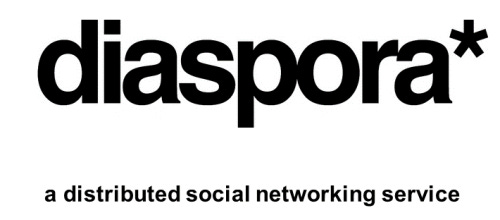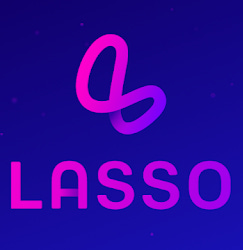What happens when you don't steal like an artist? and 24 products that failed...
Twenty-four copycats, twenty-four shutdowns, what their collapse teaches about real innovation
Originality is work. It asks for risk, discipline, and sharp judgment. Copying is easy. You grab the surface of an idea and hope the shine will carry you. It never does.
When Austin Kleon said “steal like an artist,” he meant study, adapt, and add your own force to the material. You learn the hidden structure, then build on it until it becomes yours. If you skip that labor, you end with an echo → thin, late, and forgettable.
The record is plain. Twenty-four products (and more) tried to ride the success of stronger rivals. They matched the features, launched with fanfare, and waited for users who never came.
Each one shows the same lesson: imitation without insight leads to wasted money, lost time, and quiet shutdowns.
Notice how size, cash, and brand power could not save them.
Creativity did not fail here; the refusal to practice it did.
How and most importantly Why they failed?
Social Network Copycats
Google+ (Google’s copy of Facebook): Launched in 2011 as a direct challenge to Facebook, Google+ imitated Facebook’s core social networking features (sharing posts, photos, adding friends, etc.). It introduced “Circles” to organize contacts, but this twist wasn’t enough. Google+ arrived late and lacked a compelling advantage over Facebook – it was “too much like Facebook” and offered no clear reason for users to switch. Engagement remained low, and Google ultimately shut down Google+ in 2019, proving that a me-too social network without true innovation couldn’t survive.
Yahoo 360° and Mash (Yahoo’s clones of MySpace/Facebook): Yahoo made multiple forays into social networking to catch up with rivals. Yahoo! 360° (launched 2005) was an early attempt to mix blogging and social profiles, aiming to compete with then-dominant MySpace. It never gained traction and was shut by 2008. Yahoo tried again with Yahoo Mash (2007), an invite-only network mimicking Facebook’s profile and newsfeed style. Mash added a quirky feature allowing friends to edit each other’s pages, but this proved unpopular and confusing. Yahoo shut down Mash within a year, marking another failed attempt to copy the MySpace/Facebook formula. These cases showed Yahoo was “entering the MySpace and Facebook space” without offering anything new, leading to quick failure.
StudiVZ (German Facebook clone): Germany’s StudiVZ launched in late 2005 as a “straight-up Facebook clone,” duplicating Facebook’s look, features, and even color scheme (red instead of blue). It gained early popularity among students in German-speaking countries while Facebook had not yet expanded there. However, StudiVZ provided no original innovation – it was so similar to Facebook that it earned the nickname “Fakebook”. Once Facebook localized into German and entered the market, StudiVZ’s users steadily flocked to the real Facebook. The clone was eventually sold off at a loss amid declining usage. StudiVZ’s rise-and-fall illustrated that riding on a competitor’s idea without differentiation is a temporary victory at best.
Diaspora* (open-source Facebook alternative):* Borne out of privacy concerns with Facebook, Diaspora launched in 2010 as a decentralized social network. It was “Facebook-like” in function (sharing updates, photos, friends) but aimed to give users data ownership. While conceptually novel, it struggled to grow beyond a niche. Diaspora lacked the network effect and polish of Facebook, and mainstream users never migrated. The project is still alive in a limited form, but as an illustrative example, it underscores that copying Facebook’s concept without its network or ease-of-use resulted in a fizzle rather than a Facebook killer. (Speculative case – Diaspora never “failed” completely, but it never achieved the success it set out to, due largely to simply mirroring Facebook’s idea in a less user-friendly way.)
Orkut (Google’s early social network): Orkut was actually launched in 2004 (around the same time as Facebook) and became popular in countries like Brazil and India. While not a clone per se (it slightly preceded Facebook’s global rise), Orkut did mimic the same social networking model of connecting friends online. Google’s limited support and Orkut’s failure to evolve led to its decline once Facebook expanded internationally. By 2014 Google shut down Orkut. This semi-failure showed that even being first to an idea isn’t enough if you merely copy the concept – Facebook’s superior execution and continuous innovation easily overtook Orkut’s stagnant, copycat approach. (Orkut’s case is nuanced, but it reinforces how not iterating on a borrowed idea ends poorly.)
The above example is included as an illustrative case, though Orkut’s trajectory was influenced by multiple factors beyond simple imitation.
Messaging & Content App Copycats
Google Buzz (Google’s Twitter/Facebook status clone): In 2010 Google rolled out Buzz, a social microblogging tool embedded in Gmail to compete with Facebook’s news feed and Twitter’s real-time updates. It automatically set up followers from your email contacts – an attempt to leverage Gmail’s user base to jump-start a social feed. This heavy-handed approach backfired badly. Users were irate that Buzz exposed private contact connections (e.g. auto-following an abusive ex) without clear consent. The “no setup needed” design meant people were signed up by default, triggering privacy fiascos. Buzz was essentially Google’s first direct shot at Facebook/Twitter, but lacking a thoughtful design and original value, it collapsed within a year. Google learned (and soon tried again with Google+), but Buzz became a cautionary tale that simply bolting a copied social feed onto an existing product can implode if user needs and privacy are misunderstood.
Yahoo Meme (Yahoo’s Twitter clone): In 2009 Yahoo launched Yahoo Meme, a near-exact copy of Twitter’s microblogging concept. Meme allowed short posts (capped at 140 characters) and “following” other users – it was Twitter in everything but name, even swapping Twitter’s bird logo for a dog mascot. Yahoo debuted Meme in select markets (Portuguese and Spanish audiences) but it never gained momentum. Users already had Twitter and saw no reason to switch to Yahoo’s carbon-copy service. Yahoo Meme quietly faded out a few years later. Its failure is a prime example that cloning a competitor’s successful app feature-for-feature (with no unique hook) will almost always fail to pull users away from the original.
Google Allo (Google’s WhatsApp clone): Allo, released in 2016, was one of Google’s many attempts to crack instant messaging. It was explicitly designed to compete with the giants – Facebook’s WhatsApp/Messenger and Apple’s iMessage. Allo copied WhatsApp’s phone-number-based signup and offered encrypted chats, stickers, etc., adding a Google Assistant bot as its twist. But this wasn’t enough to overcome WhatsApp’s network effect. Allo launched without critical features like a desktop client, making it feel “less functional” than the apps it aimed to replace. Users in WhatsApp’s core markets had no incentive to switch. After tepid adoption, Google shut down Allo in 2019. The lesson: entering a saturated market with a me-too messaging app (even one with minor new features) is doomed if it doesn’t dramatically rethink the experience or solve a major user pain point.
Facebook Poke & Slingshot (Snapchat clones by Facebook): After Snapchat’s explosive growth in ephemeral photo messaging, Facebook tried to copy its young rival when acquisition attempts failed. In 2012 Facebook hurriedly built “Poke”, an iPhone app nearly identical to Snapchat’s core function (self-destructing photo/video messages). Poke was literally built in 12 days as a hackathon project and launched with fanfare. Not surprisingly, it flopped – users saw it as a “shameless Snapchat clone” and largely ignored it. Facebook shut Poke a year later. Undeterred, Facebook released Slingshot in 2014, another Snapchat-like app focusing on ephemeral video messages. Slingshot too failed to gain any real user base. People wanted Snapchat’s unique community and privacy ethos, not a Facebook knock-off. Observers noted that Poke’s failure “served as a reminder that it takes more than a few talented engineers to beat Snapchat” when you’re just copying its idea. In short, Facebook learned the hard way that cloning a viral app without understanding the culture and appeal behind it yields an embarrassing flop.
Twitter “Fleets” (Twitter’s Stories feature clone): In late 2020 Twitter rolled out Fleets, an ephemeral content feature copying the popular “Stories” format invented by Snapchat and popularized by Instagram. Fleets let users post disappearing 24-hour posts at the top of the app – basically Twitter’s version of Instagram Stories. The move was a response to competitors’ success with ephemeral sharing. However, Fleets never took off; most Twitter users simply didn’t use it. Twitter admitted that Fleets had “low usage” and wasn’t bringing new people into tweeting. Within eight months, Twitter discontinued Fleets in August 2021, acknowledging it “failed to win the enthusiasm of users” and wasn’t worth continuing. The short life of Fleets highlighted that even if the Stories concept works elsewhere, a copy-paste implementation can fall flat if it doesn’t align with how users prefer to engage on a given platform.
Facebook Lasso (TikTok clone by Facebook): In late 2018, Facebook tried to take on the TikTok craze by launching Lasso, a standalone app for 15-second viral videos. Lasso was explicitly Facebook’s “answer to TikTok”, mimicking TikTok’s feed of algorithmically recommended short clips with music overlays. Facebook’s strategy was to carve out a TikTok competitor, but Lasso never gained traction in the U.S. or the few markets it soft-launched. After a year and a half, Facebook shut down Lasso in July 2020, conceding that it had been a failed experiment. One tech commentator noted Facebook “lost 2 years by half-assing” with Lasso – essentially wasting time on a half-hearted clone instead of truly innovating. Facebook then shifted focus to Instagram Reels, a better-integrated (and ultimately more successful) TikTok-like feature. Lasso’s demise shows that even a giant like Facebook can’t simply copy a viral product without wholehearted effort and expect to win, especially not against a fast-moving target like TikTok.
Hardware/Gadget Copycats
Microsoft Zune (Microsoft’s iPod clone): Microsoft’s Zune media player (launched 2006) was aimed squarely at Apple’s dominant iPod. The Zune copied the basic idea of a handheld MP3 player with an integrated music store, trying to ride the iPod’s coattails. The device actually earned decent reviews and wasn’t poorly designed – but it brought nothing compellingly new versus the iPod. By the mid-2000s, Apple’s iPod had a five-year head start and a massive iTunes ecosystem. Microsoft was “too little, too late”, as one former exec admitted. Crucially, Microsoft “never gave consumers a clear reason to buy one instead of the iPod”, in other words, Zune was a “me-too” product without a differentiator. Sales languished, and Zune was quietly discontinued by 2011. Zune’s flop underscores that copying a hit gadget feature-for-feature (and even matching its price) fails when your competitor already has the mindshare, market momentum, and an entrenched user library of content.
Amazon Fire Phone (Amazon’s smartphone copying iPhone/Android): When Amazon released the Fire Phone in 2014, it was an attempt to break into the premium smartphone market dominated by Apple’s iPhone and Samsung’s Android flagships. The Fire Phone tried to imitate many aspects of those successful phones – a sleek touchscreen design, app ecosystem (via a forked Android OS), and exclusive features like 3D visual effects. Yet it missed the mark badly. Amazon overpriced the Fire Phone at $199 on contract – essentially the same cost as an iPhone or Galaxy – without offering equal quality or app selection. Its app store was very limited (no Google apps, far fewer apps overall). Most importantly, it arrived “late to market”; by 2014 smartphones were mature and Amazon brought “too little, too late” to convince anyone to switch. The phone’s marquee innovations (like the gimmicky 3D “Dynamic Perspective” and an object-scanning tool meant to drive Amazon sales) didn’t solve real user needs. Consumers saw it as an uninspired clone with Amazon bloat. The Fire Phone was a monumental flop – Amazon wrote off $170 million in unsold inventory. This failure showed that copying the form of a successful product without matching its substance (app ecosystem, OS polish, competitive pricing) is a recipe for disaster.
Microsoft Kin (social phone copying teen trends): In 2010, Microsoft launched the Kin One and Kin Two phones, targeting teens and social-media enthusiasts. The Kin devices were inspired by the success of feature-heavy phones like the Sidekick and the rise of mobile social networking. They sported a funky form factor and a Kin Loop home screen aggregating social feeds – in essence, an attempt to copy the “phone for the MySpace generation.”
However, Kin lacked critical features (no app store, limited messaging capabilities) and required an expensive Verizon data plan, undermining its teen appeal. Sales were abysmal – reportedly only a few hundred units – and Microsoft pulled the plug just 48 days after launch. The Kin’s spectacular flop is often cited as an example of big companies chasing trends (in this case, youth-oriented social phones) without fully understanding the market. By copying a concept (a social phone) but executing it poorly (with high cost and missing features), Microsoft ended up with one of the quickest product failures in tech history. (Well-documented case of failure, though the Kin was a new product, it heavily drew inspiration from earlier trendy devices without adding value.)
(Note: Microsoft Kin’s case is included as it highlights failure from imitation of a trend, though it was a unique device. Microsoft tried to “steal” the idea of a social-centric phone but without the necessary ingredients for success.)
Samsung’s S Voice and Milk Music (clones of Siri and Spotify): Samsung, while hugely successful in hardware, has a trail of failed software services that were blatant copies. S Voice, introduced in 2012, was Samsung’s answer to Apple’s Siri voice assistant. It never matched Siri’s intelligence and was quickly eclipsed by Google’s Assistant; Samsung quietly retired S Voice by 2020. Milk Music, launched in 2014, was a Samsung-only music streaming app copying Pandora/Spotify’s model of personalized radio. Aside from a slick interface, it offered nothing new and required Samsung devices – unsurprisingly, users just stuck with Spotify. Milk Music was shut down in 2016 after failing to gain subscribers. These examples reinforce that even if you have a large user base (as Samsung does), simply cloning a competitor’s software service without distinct value will result in indifference and a fast fade-out.
(Global context note: Many China-based tech companies have succeeded by initially copying U.S. companies’ products but localizing them – those are cases of effective imitation with adaptation. In contrast, the above are cases where no meaningful adaptation occurred, leading to failure.)
Online Service & E-commerce Copycats
Amazon Auctions (Amazon’s eBay-style auctions): In 1999, seeing eBay’s success, Amazon added an auction feature to its site to directly copy eBay’s online auctions model. Amazon integrated auctions into product listings and even offered fraud protections to entice users. Despite Amazon’s hype, the service flopped and was wound down by 2001. Why? Amazon customers associated the brand with fixed-price retail and bargain deals – they weren’t showing up to bid like on eBay. Buyers on Amazon’s fledgling auction platform often bid too low, while sellers listed overpriced items, leading to a mismatched, unsatisfying experience. Many sellers simply stuck with eBay, which already had a vibrant community. After two years, Amazon quietly conceded defeat. “Dislodging a well-established online monopoly like eBay proved very hard” – especially when Amazon’s auction copy lacked the community and excitement that made eBay popular. Amazon pivoted focus to its fixed-price Marketplace, leaving this copycat attempt as a forgotten failure.
Facebook Deals (Facebook’s Groupon-like daily deals): In 2011, Facebook decided to jump on the group-buying craze pioneered by Groupon. It launched Facebook Deals, a service offering time-limited local discounts, very much “bringing competition to daily deals leader Groupon”. Facebook leveraged its social network for distribution, but after just four months of testing, it killed the product entirely. Deals never took off – users found the offers underwhelming, and Facebook lacked the dedicated salesforce that Groupon had to source attractive deals. The market was also flooded with copycats by then, making every daily deals service (including Facebook’s) look like a commodity. One analyst noted Facebook Deals was an “underwhelming product and experience”, and its shutdown implied Facebook believed “the approach lacks merit”. In short, Facebook tried to “steal” the Groupon model without adding anything new – and quickly learned that merely plugging someone else’s successful model into your platform is not guaranteed to work.
LivingSocial (daily deals site copying Groupon): LivingSocial was an early rival to Groupon that rode the same wave of online daily coupons. Founded in 2007, it expanded rapidly with Groupon-style email deals in cities worldwide. For a time, LivingSocial was nearly as big as Groupon, but it was essentially offering the same product – daily discount emails – in a market that quickly became oversaturated. Consumers grew fatigued with inboxes full of similar offers, and merchants became wary after negative experiences with deep discounts. By the mid-2010s, the daily deals craze cooled. LivingSocial’s revenue plunged, and in 2016 it was acquired by Groupon for effectively $0. In retrospect, LivingSocial failed to find a sustainable edge over Groupon; it “rose to prominence” fast but then “consumer interest stalled” once the novelty wore off. The fate of LivingSocial (and dozens of other Groupon clones that vanished) illustrates that copying a hot business model can lead to short-term growth, but if the model itself is a flimsy fad, a copycat will flame out just as fast without continuous innovation.
Microsoft Mixer (Mixer’s copy of Twitch game streaming): Mixer was Microsoft’s attempt to challenge Amazon’s Twitch in live game streaming. Microsoft acquired a startup (Beam) in 2016 and rebranded it as Mixer, then poured resources into it – even paying superstar streamers like “Ninja” millions to stream exclusively on Mixer. Mixer did introduce a few innovations (like lower latency streams), but fundamentally it was offering the same proposition as Twitch: watch gamers stream live. Despite Microsoft’s deep pockets, Mixer struggled to pull viewers from Twitch and YouTube. By 2020, it became clear that Mixer’s market share was minuscule. Microsoft announced it would shut down Mixer and partner with Facebook Gaming, essentially admitting defeat. Microsoft’s gaming chief frankly noted they “started pretty far behind” and couldn’t catch up to the entrenched competitors. The Mixer saga shows that even big spending can’t save a copycat that lacks the network effects and community momentum of the original. Microsoft tried to “fast follow” Twitch’s model without a radically different strategy, and the result was an expensive failure.
Blockbuster Total Access (Blockbuster’s copy of Netflix): The demise of Blockbuster is a classic story of a giant toppled by a nimble upstart – and a failed imitation plays a big role. Netflix launched its DVD-by-mail service in 1998, offering online rentals with no late fees. Blockbuster, the king of video rental stores, didn’t seriously respond until 2004, when it rolled out “Total Access,” a Netflix-style DVD mail subscription coupled with in-store returns. By then, Netflix had a huge lead. Blockbuster’s copycat service, while functional, was late and hampered by the company’s continued reliance on physical stores (and pesky late fees). Blockbuster’s CEO once boasted they could “copy Netflix and crush the upstart”, but that didn’t work. Customers found Netflix’s purely online model more convenient, and Blockbuster couldn’t shake its legacy baggage. The company also tried a Netflix-like streaming platform too late in the game. Ultimately Blockbuster went bankrupt in 2010. In hindsight, Blockbuster “had more than enough time to adapt” but executed only half-hearted copies of Netflix’s model, without fully committing to innovation. The result was a textbook example of how merely emulating a disruptor (instead of truly embracing the disruptive model) leads to failure.
Various “Uber-for-X” Clones: Uber’s meteoric rise in ride-hailing spawned countless imitators trying to be the “Uber of ___” (food delivery, home services, etc.). Many of these failed due to shallow understanding of the original’s success. For example, Homejoy tried to be “Uber for house cleaning,” copying Uber’s on-demand approach but without enough quality control or market fit – it shut down in 2015 amid customer and contractor dissatisfaction. Similarly, numerous Uber-like taxi apps in smaller markets launched and folded because they underestimated the amount of capital and network-building required to reach critical mass against incumbent players. These cases emphasize that borrowing the on-demand interface without the rigorous backend operations, funding, and local market adaptation that Uber mastered will likely flop. (Each individual case varies, but the pattern of failed “Uber-for-X” startups is well-documented in the 2014–2016 period of peak on-demand hype.)
(The “Uber-for-X” phenomenon is mentioned generally, as many startups broadly copied Uber’s business model with little innovation. Only those who localized and adapted (like Grab or Didi) survived, while straight copycats often went bust.)
Other Notable Copycat Failures
Google Lively (Google’s Second Life clone): In 2008, Google briefly entered the virtual world arena with Lively, a 3D avatar chatroom service akin to Linden Lab’s Second Life. Lively allowed users to create avatars and virtual rooms embedded on websites – an idea “extremely similar to Second Life”’s online 3D environments. Google hoped to capitalize on the mid-2000s virtual world hype, but Lively was a flop from the start. It lacked the rich user-generated content and economy that made Second Life engaging. With little to do and only a small audience (reportedly just 10,000 active users), Lively failed to catch on beyond novelty value. Google killed Lively after only about 6 months (shutting it by end of 2008). This failure showed that copying a niche success like Second Life required matching its depth and community – simply launching a lightweight lookalike without those elements meant Lively died “not even a year later” with hardly a whimper.
Cuil (search engine “Google killer” that wasn’t): Cuil (launched 2008) was a VC-funded search engine created by ex-Googlers, loudly billing itself as a Google competitor with a bigger index. It indexed 121+ billion pages – more than Google at the time – and had a different results page layout with images. But while Cuil copied Google’s core premise (automated web search) on the surface, it failed spectacularly in execution. Users who tried Cuil found its search results often irrelevant or missing obvious pages, especially at launch. In short, Cuil focused on outdoing Google’s index size and look, but not its relevance. Traffic plummeted after the initial curiosity. By 2010, Cuil went offline and shut down, ending as a “would-be Google killer” that met a “bitter failure”. This example underscores that copying a successful service like Google Search requires more than matching its features – without comparable quality of outcome (in this case, useful search results), a clone will swiftly lose users’ trust and vanish.
Google Wave (attempt to reinvent email/IM by borrowing from both): Google Wave (2009) was an ambitious project to combine email, instant messaging, and document collaboration in one product.
While not a direct clone of a single competitor, Wave tried to mimic and merge features of existing communication tools (threaded conversations like email, real-time typing like IM, wiki-style editing, etc.). The result was innovative but overly complex and confusing to users who already had simpler tools. Wave failed to gain adoption and was canceled after a year. Its failure is often attributed to Google building something because it could, by piecing together others’ ideas, rather than because users asked for it. Wave illustrates that even “stealing like an artist” (combining ideas) can flop if the end product doesn’t solve a clear user need in a friendly way. Users stuck with the more straightforward separate services (Gmail, MSN/GTalk, etc.), proving that just mashing up others’ successful features isn’t a guarantee of success.
(Google Wave is a borderline case since it wasn’t a pure copy of one product – it was more an experiment blending many. It’s included to highlight that copying multiple ideas without clarifying the purpose can also fail.)
These examples all underscore a common theme: copying a successful idea without meaningful originality or understanding why it succeeded often leads to failure.
The imitators above either delivered poor executions, misunderstood the market, arrived too late, or simply offered a “me-too” product that gave consumers no reason to leave the incumbent.
In the words of one analyst, when a copycat comes “to market late…trying to compete with…a very large user base, it becomes very difficult to close that gap”, even for a huge company.
In sum, the tech graveyard is littered with companies that tried to “steal like an artist” but instead just stole – and learned that without innovation, a clone is destined to remain a second-rate player or crash entirely.

















An absorbing piece, Rishikesh! Great work. I vividly remember using Orkut, in fact all of my class fellows did until Facebook arrived. Rest is history 😊